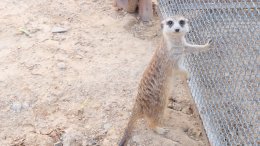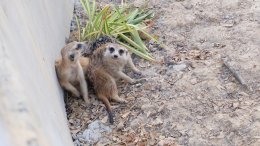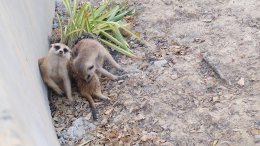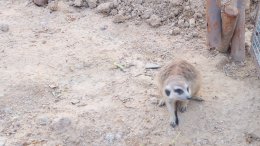MEERKAT
6168 Views |

This article is about the mammal. For other uses, see Meerkat (disambiguation)."Meerkats" redirects here. For the 2008 British film, see The Meerkats."Suricata" redirects here. For the intrusion detection system, see Suricata (software).
The meerkat or suricate (Suricata suricatta) is a small carnivoran belonging to the mongoose family (Herpestidae). It is the only member of the genus Suricata. Meerkats live in all parts of the Kalahari Desert in Botswana, in much of the Namib Desert in Namibia and southwestern Angola, and in South Africa. A group of meerkats is called a "mob", "gang" or "clan". A meerkat clan often contains about 20 meerkats, but some super-families have 50 or more members. In captivity, meerkats have an average life span of 12–14 years, and about half this in the wild.
Meerkats are primarily insectivores, but also eat other animals (lizards, snakes, scorpions, spiders, eggs, small mammals, millipedes, centipedes and, more rarely, small birds), plants and fungi (the desert truffle Kalaharituber pfeilii). Meerkats are immune to certain types of venom, including the very strong venom of the scorpions of the Kalahari Desert, unlike humans.
Meerkats forage in a group with one "sentry" on guard watching for predators while the others search for food. Sentry duty is usually approximately an hour long. A meerkat can dig through a quantity of sand equal to its own weight in just seconds. Baby meerkats do not start foraging for food until they are about 1 month old, and do so by following an older member of the group who acts as the pup's tutor. The meerkat standing guard makes peeping sounds when all is well.







